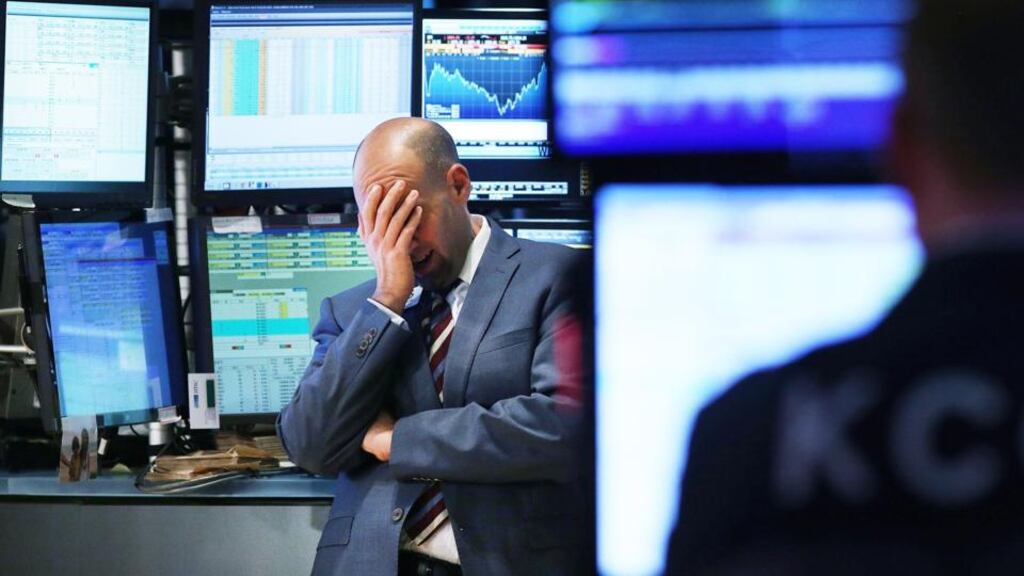Pullbacks, corrections, bear markets, crashes – what's the difference exactly? The terms are often used loosely, but a pullback denotes a brief single-digit decline. A correction refers to a decline greater than 10 per cent but less than 20 per cent; stocks are in bear market territory when declines exceed 20 per cent. There is no specific definition of crashes, although they are characterised by manic selling and apocalyptic sentiment.
So, recent declines represent a market correction, right?
Strictly speaking, the S&P 500’s peak-to-trough 9.8 per cent decline is a pullback, not a correction. Still, the small-cap Russell 2000 and the tech-heavy Nasdaq have suffered double-digit declines, as have Europe and emerging markets indices. Accordingly, yes, markets have been in corrective mode.
Is that a cause for panic?
Hardly. Corrections are common. There have been 31 corrections since 1945, or roughly one every two years. Even during good times, corrections occur, US indices suffering declines of 16 per cent in 2010, 19.4 per cent and 9.8 per cent in 2011, and 9.9 per cent in 2012. This hasn’t stopped stocks from tripling since the US bull market began in March 2009.
What about bear markets?
Usually, corrections don’t lead to bear markets. Of the 31 aforementioned corrections, bear markets ensued on 12 occasions, with market meltdowns – losses of at least 40 per cent – occurring on three occasions.
Bear markets are presumably longer affairs?
Yes. S&P Capital IQ analyst
Sam Stovall
notes the average correction has lasted just five months. In contrast, the average bear market lasts 14 months, with stocks usually taking just over two years to reclaim past highs.
Some bear markets, unfortunately, last much longer. Japanese stocks remain about 60 per cent below their 1989 peak, while the FTSE 100 has yet to reclaim its December 1999 high. US stocks have also suffered long periods of stagnation, going sideways between 1929 and 1954 and again between 1966 and 1982, as well as enduring a lost decade in the noughties. During such periods, multiyear cyclical rallies can occur, before ultimately fizzling out. So-called secular bear markets typically begin when valuations hit unsustainable extremes.
Similarly, cyclical bear markets occur in secular bull markets; a number of painful but brief declines occurred during the great 1982-2000 secular bull market.
What environment are we in today?
Investors differ on this point. Some believe the US secular bear market that began in 2000 ended in March 2009, when panic selling resulted in the lowest valuations in decades. Others believe the five-year rally that began in 2009 is merely a cyclical bull in a secular bear market.
Whatever about the US, stocks in the UK and in most of Europe remain shy of levels originally hit almost 15 years ago.
What has caused recent volatility?
In one recent report, seven different reasons for market weakness were given, ranging from weak economic data and the threat of deflation to Ebola, stock market woes in Greece, and the threat of Islamic State (IS) in Iraq and Syria.
Most supposed catalysts refer to issues in the news for some time now. Given this, and the fact there is no one overriding concern, bulls argue a bear market is unlikely to ensue – rather, it's just a periodic bout of market nerves, a healthy correction to shake out the weaker hands. As market strategist Ed Yardeni once put it, "corrections are panic attacks that aren't validated by the fundamentals".
How does the current period compare to past cases of market jitters?
Volatility has escalated but is nowhere near levels seen in previous years. When investors are calm and optimistic, the Vix, or fear index, is low, while it rises in times of market anxiety.
Recently, the index briefly spiked above 30, roughly triple this summer’s multiyear low and the highest level since 2011. However, it quickly fell back again. A more sustained period above 30 is normal in jittery markets, with readings in the mid-to-high 40s usually seen at volatility peaks.
Clearly, traders are not expecting a bear market or a systemic shock. However, volatility spikes are rarely shortlived. The fact the Vix hit a three-year high suggests the extraordinarily low volatility of recent years may be ending.
Might the correction be already over?
Just 40 per cent of US stocks were recently trading above their 200-day moving average, a level that marked important lows throughout the 2003-2007 bull market as well as in 2010, 2011 and 2012. Just 14 per cent of stocks were above their 50-day average, and strong bounces invariably follow such oversold conditions.
However, it’s also true that much lower readings occur in bear markets. Indeed, weak breadth is a characteristic of bear markets – at market peaks, it’s often the case that many stocks are already in down trends, with strength in a select number of large-cap stocks lifting the index and masking underlying weakness.
Even if the market low has already been seen, it’s unlikely to be like the V-shaped recoveries that have been the norm over the last two years. As noted earlier, corrections tend to play out over months rather than weeks, with stocks oscillating in both directions.
Can a crash be ruled out?
The case for a market crash is very difficult to make. US stocks appear expensive, but not eye-wateringly so. Unlike the technology and banking crashes of 2000 and 2007 respectively, no one sector is dominant today. Additionally, no one expects a US recession.
As for Europe, the economic data is more sober – Germany is expected to fall into recession – but valuations are modest, limiting potential downside.
Still, I’d like to prepare for a bear market
. Market timing is notoriously difficult. Investors who sell stocks and go to cash are rarely rewarded for doing so, often missing out on market gains. Long-term investors are generally better off buying in times of market weakness.
Worried stock-pickers might like to overweight value stocks, as research shows they are typically the quickest to recover from declines.
Similarly, investors might choose to rotate from expensive markets into cheaper countries. Although US indices have held up better than those in Europe and emerging markets, most valuation metrics suggest the latter are a better long-term bet. There is also the option of rotating out of stocks and into bonds. However, many commentators warn historically low bond yields make them a more dangerous investment proposition than in the past.
I am drip-feeding money into markets every month. Should I stop?
No. As
Warren Buffett
often points out, long-term savers should always hope for lower prices – the more prices drop, the lower your average cost. Ironically, buyers tend to be “elated when stock prices rise and depressed when they fall”, notes Buffett.
The same point is made by US money manager Ben Carlson. He notes that while US stocks appreciated by 62 per cent between 2000 and 2013, the regular investor saw his investment grow by 79 per cent. Crucially, the regular investor would actually have been in the red for much of that period, and that made all the difference – more than 80 per cent of the gains came from when the investment was underwater. In other words, if you're a regular investor with a long-term horizon, you should be cheering lower, not higher, stock prices. Bring on the bear.



















